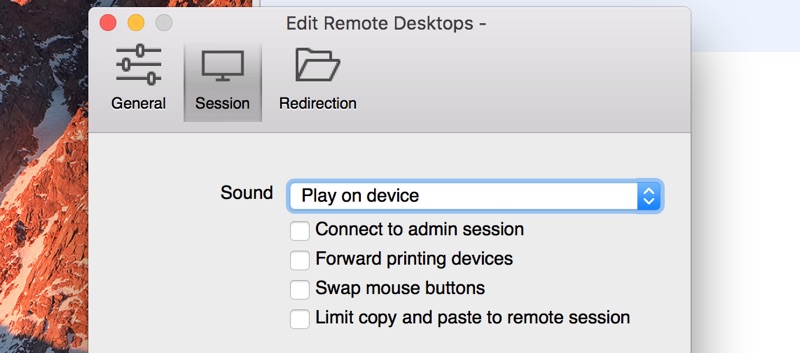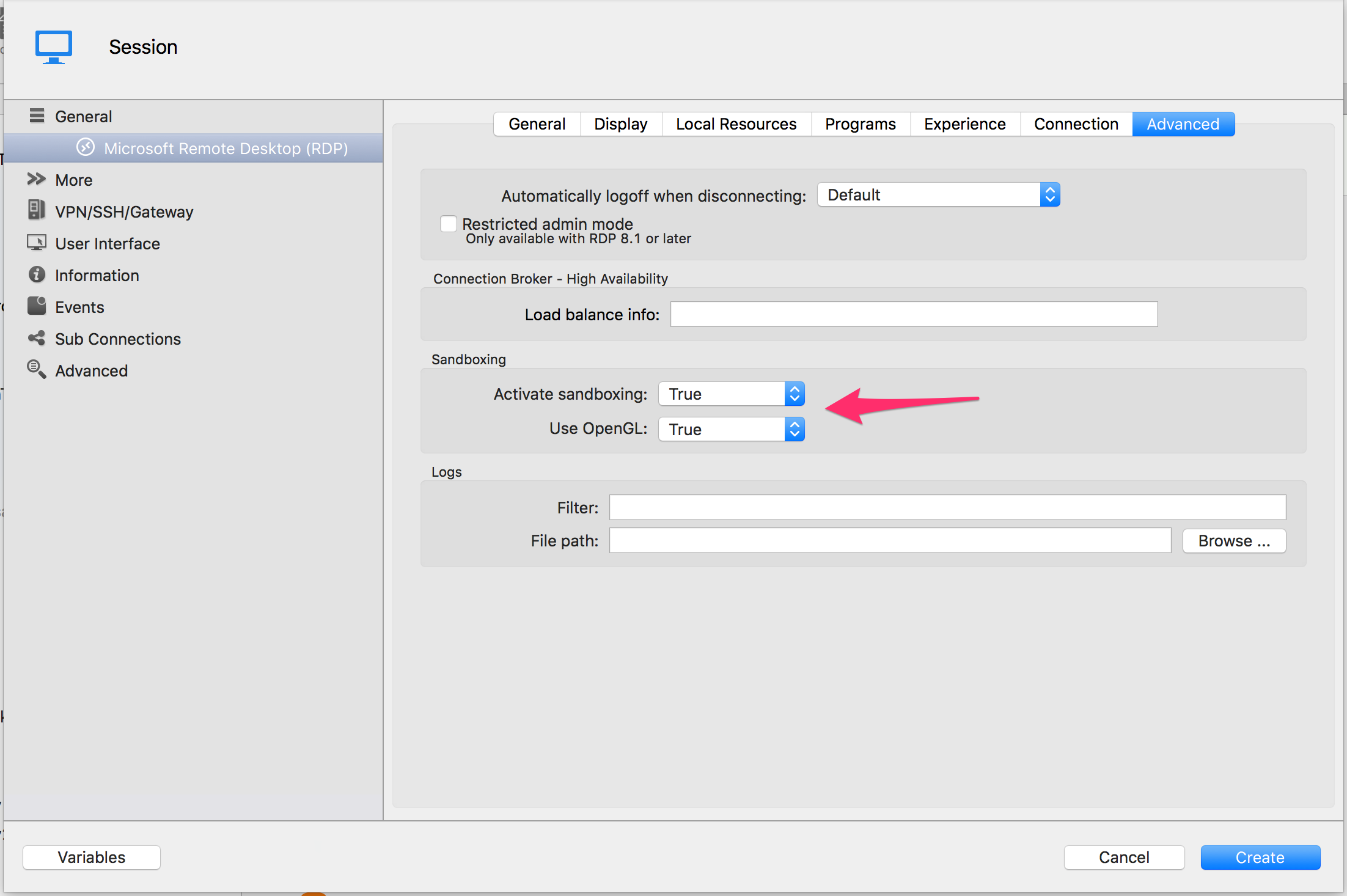Microsoft has recently released a major update for the Remote Desktop app for macOS, rolling out not only a new design, but also several new features enabled in a remote session.
Microsoft Remote Desktop 10 for Mac is compatible with macOS 10.12 or later. Contact the Lone Wolf Support Team with any questions regarding the import function. Log in to your Mac. Note your macOS version by clicking the Apple icon on the top left of the screen, and selecting About This Mac. Further, version 10 will be the last release of RDC for the Mac that will be compatible with macOS 10.12 Sierra. On your Mac, download and install Microsoft Remote Desktop 10 from the Mac App Store. How to migrate connection data from Microsoft Remote Desktop 8.0? Verify you have the latest version 8.0.43 installed to migrate your connection data. Next look for Microsoft Remote Desktop in the App Store to download the new application on your Mac running OS X Yosemite or higher. Once installed you can skip the first run experience.
Migrate Microsoft Remote Desktop Mac Version 10 Free
The first thing you’ll notice when updating Remote Desktop for Mac to version 10 is the new UI. Microsoft has focused specifically on making the app look more modern and to align it with the design of the operating system, so you’ll now see flat thumbnails in the main window to let you quickly connect to saved clients.
- Download microsoft remote desktop mac 10.6.0 for free. System Tools downloads - Microsoft Remote Desktop by Microsoft Corporation and many more programs are available for instant and free download.
- This article details the steps needed to successfully update the Microsoft Remote Desktop application on your Macintosh computer to version 10.Important Note:. The simplest way to accomplish this is to download and run the Right Networks Setup Wizard for Mac. It will assist in downloading the most up-to-date version of RDP, and will also.
Furthermore, Microsoft has extended the list of device redirections in the remote session, so while previously you were allowed to redirect a printer, you can now do the same thing for your local microphone and smart cards.

“Please note that you can’t use a redirected smart card to sign into your remote PC. The redirected smart card isn’t available until after you sign in,” Microsoft explains.
Another handy update is support for macOS shortcuts in a remote session, with allowed hotkeys currently for cutting, copying, and pasting.
How to migrate data from previous versions
In documentation posted on its Enterprise Mobility + Security blog, Microsoft provides guidance on how to migrate connection data to this latest version from Microsoft Remote Desktop 8.0.
Migrate Microsoft Remote Desktop Mac Version 100
“Verify you have the latest version 8.0.43 installed to migrate your connection data. Next look for Microsoft Remote Desktop in the App Store to download the new application on your Mac running OS X Yosemite or higher. Once installed you can skip the first run experience. In the menu click connections and choose the option to import connections from the other app. Now you are set to use the new app,” the company says.
At first glance, version 10 does come with noticeable performance improvements, leaving aside the new UI, with everything feeling more responsive and easier to use thanks to the shortcuts. You can give it a try to the new version by downloading Microsoft Remote Desktop for macOS using this link.
The MicrosoftRemote Desktop Connection version 10 program in Macintosh OS offers many advanced features that can enhance your experience with remotedesktop.sou.edu or virtuallab.sou.edu
All of these settings are available when setting up the initial connection to remotedesktop or virtuallab, or you can modify them later by clicking on the Edit icon on the saved connection icon after starting Remote Desktop Connection.
Display Settings
Click on the Display tab to access display settings. An important setting is the ‘Use All Monitor’ setting, if you are using multiple displays the default setting is to use all monitors available. I have found it to be better to use just one, but that is a matter of preference. Here is where you make the adjustment.

If you are using a modern Apple computer with a high-resolution Retina display, you may want to enable the option to Optimize for Retina displays to ensure the best viewing experience.
Devices & Audio
Click on the Devices & Audio tab and then use the checkboxes to tell the Remote Desktop client whether you want to share your local printers, smart cards, clipboard, and microphone with the remote Windows computer. If you share your printers, you can print from the Windows environment and have it use your local printer. If you share your clipboard, you can copy and paste text (but not files--see the next section for how to share files) between your Mac and the Windows computer. If you share your microphone, you can make it available to the Windows computer if you need it.
Folders
To share a folder on your Mac with the Windows computer to enable file transfer between the systems, click on the Folders tab, then click the checkbox to Redirect folders, and then use the plus button to add folders for redirection. If you want to share an entire drive with the remote session, such as your Mac's hard drive or an attached USB flash drive, you can select the root of the drive when you are asked to browse for a folder.

If you have multiple connections listed, as in the example above, you can set the preferences individually for each connection independently from each other.

Migrate Microsoft Remote Desktop Mac Version 10.13.6
For more information click here Microsoft Remote Desktop